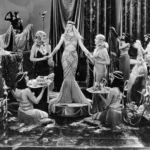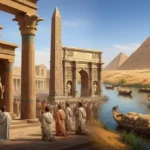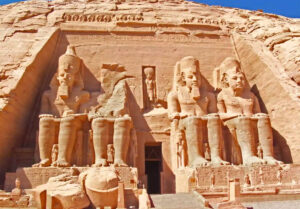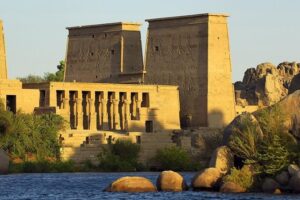Ancient Egypt Legacy: An Eternal Story
Ancient Egypt thrived for over 3,000 years. This civilization laid the groundwork for many modern innovations. Its legacy includes monumental architecture, pioneering science, and a rich artistic tradition. The heritage of Ancient Egypt remains one of the most vital and enduring in history.
Architecture, Engineering, and Urban Planning
Ancient Egyptians built colossal structures with great precision. They did not use brute force alone. They used their knowledge of mathematics and engineering. Builders quarried, transported, and placed millions of tons of stone for the Great Pyramid of Giza. They likely used ramps, levers, and sledges to move materials.
Egyptians also built other wonders. The Temple of Karnak features a massive hall with 134 colossal columns. The Mortuary Temple of Hatshepsut was carved directly into a cliff. Egyptians also mastered urban planning. They built cities like Tell el-Amarna on a grid plan. They also sculpted and transported massive obelisks across great distances.
Science, Medicine, and Mathematics
Ancient Egyptians were skilled scientists and observers. Their medical knowledge was advanced. Mummification gave priests and physicians a deep understanding of human anatomy. They could identify and treat many ailments. The Edwin Smith Papyrus describes surgical procedures. The Ebers Papyrus lists hundreds of remedies. They used splints, bandages, and even moldy bread for infections.
The Egyptians also used astronomy for practical needs. They created a 365-day solar calendar. It had three seasons tied to the Nile’s flood cycle. They used stars to align their temples and pyramids.
In mathematics, the Egyptians used a decimal system. Their geometry was crucial for land division and construction. After the Nile floods, they used knotted ropes to re-establish property boundaries. The Rhind Mathematical Papyrus shows their skills with algebra and geometry.
Ancient Egypt Legacy: Art and Symbolism
Ancient Egyptian art had a functional purpose. It was linked to religion and the afterlife. Hieroglyphs served as both writing and art. They preserved stories of history and pharaohs. Artists followed a strict canon of proportion, using a grid to draw figures consistently.
Their art was rich with symbolism. The ankh symbolized life. The Eye of Horus offered protection. The scarab beetle represented rebirth. Materials also held symbolic power. Gold represented the gods. Pigments like lapis lazuli symbolized the heavens. The art guided the deceased on their journey to the afterlife.
Ancient Egypt Legacy: Government and Society
Ancient Egypt’s stability came from its social structure. The pharaoh was a divine ruler. A complex bureaucracy supported him. The vizier acted as the chief minister. Priests, scribes, and military officers held high rank. Scribes were vital to administration. They managed records, taxes, and decrees. The economy was based on redistribution. The state collected taxes in goods and labor to fund public projects. This system was guided by Ma’at, the principle of order and justice. It provided a framework that lasted for millennia.
Ancient Egypt Legacy: An Eternal Legacy
Fascination with Ancient Egypt has not faded. Its legacy thrives in modern culture. We see its influence in films like The Mummy, jewelry, and architecture. Obelisks now stand in major cities around the world. The field of Egyptology remains active. Discoveries, like the recent find of the Lost Golden City of Luxor, consistently capture global attention. The artifacts of this civilization continue to inspire and intrigue us all.










